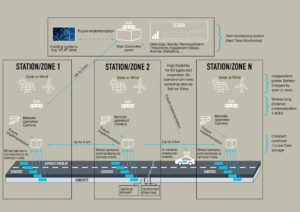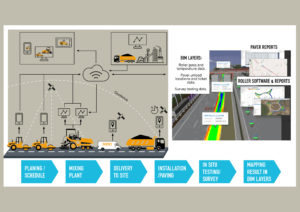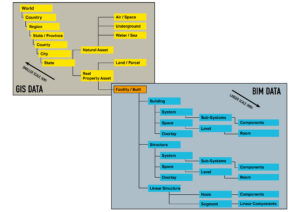Driving innovation in road asset management to leverage value
Dr Bachar Hakim and Diego Gonzalez Pascual
With road authorities across the world increasingly asked to do more — such as adapt to new technologies, futureproof and maintain the systems effectively, and mitigate environmental impact — for less, pavement and digital specialists Dr Bachar Hakim and Diego Gonzalez Pascual discuss the latest innovations available to help them secure value.
As transport modes, systems and usage continues to evolve rapidly, road authorities must work to optimise their road networks, reducing accidents, congestion, noise and pollution, and maintain high-quality infrastructure, in response to rising user expectations of network availability, performance, safety and security. And do it all with increasingly limited resources.
Furthermore, they need to ensure that the infrastructure they provide is equipped to adapt to the use and demands of emerging, smart technologies, such as Connected and Autonomous Vehicles (CAV), electric car charging, energy generation and harvesting, in-vehicle sensors, and data communication management for route and condition optimisation.
In response to these new pressures, the industry must find new ways to provide smarter, better and increased services for less, generating value from innovative materials, technologies, and industry approaches, especially in the performance and management of road pavement infrastructure.
Securing the best-possible return
The international standard for asset management, ISO 55000 provides a strategic framework to support organisations in generating the “best possible net return from assets”, while also reducing costs. Drawing on this standard, as well as our pavement management expertise and work with clients, here are four key ways in which asset owners can incorporate smarter technologies into their asset management plans and systems — leveraging whole life costs, improving performance and minimising risks.
1/ Ensuring healthier, safer road pavements
As a result of traffic loading and environmental variations, pavements deteriorate with time and rehabilitation is required to maintain serviceability throughout their life. Typically, the condition of road pavements is monitored using visual inspection and annual surveys to assess surface defects, skid resistance and bearing capacity. This approach is reactive, however, highlighting visible surface defects rather than predicting deterioration to aid maintenance planning.
Digital tools offer road authorities the opportunity to transform the process and implement digital health monitoring of the whole pavement system. Using a combination of smart pavement sensors, machine surveys and in-vehicle technologies, it’s possible to develop a system that enables real-time measurement of stresses and strains, temperature and moisture to generate continuous, remote data that can be compared with the material thresholds for planning maintenance.
For authorities, this kind of system can improve lifecycle management and reduce the risks of pavement failure, preventing the unexpected repairs and subsequent traffic delays that negatively impact on an authority’s costs and reputation.

2/ Improving safety through automation
Building on this, by using automated technologies — many of which are already available to the construction industry — authorities can remove and/or mitigate the exposure of site technicians to the safety risks inherent in conventional methods of testing and monitoring asphalt pavements.
These technologies can facilitate a complete and seamless process to ensure the compliance and quality of a construction site, as well as integrate automated, digital data collection (via smart sensors) with cloud-based solutions to oversee performance in service and promote more effective digital asset management (see figure 2, for details).

Where next for automation?
Funded by Highways England, Mineral Products Associations and Eurobitume UK, AECOM recently completed collaborative research projects, to review and explore the possibility of incorporating recent technological advancements and automation in quality monitoring equipment, as an alternative to the conventional testing and monitoring of asphalt pavements to help improve safety.
The research projects covered two main issues: firstly, automation in controlling surface regularity and macro-texture, assessing contactless 3D laser-based technologies; and, secondly, automation in managing quality during installation, with three suites of technologies to monitor asphalt temperatures and compaction requirements.
3/ Leveraging the value of BIM
A BIM model is not only a 3D representation of an asset, but also a repository for a full set of information about that asset. This includes data covering dimensions, condition, performance, function and classifications.
A highly organised information structure is needed from the first stage of the design, so a rich and detailed asset data collection can be leveraged during the whole lifecycle of the object. This structure is based on the early implementation of the construction and asset management needs and starts from the conceptual design stage.
The data structure (shaped by attributes), which includes a core information structure (or tracking identification), gets an increasing amount of information that grows with the certainty of the design (Concept design => Detailed design => As built design) and with the scale.
This information is gathered across the whole lifecycle and may include an interaction of GIS and BIM data.

The data extraction spreadsheet (data-drop) and the IFC files (BIM models) allow for migration of the Project Information Model (PIM) information to the Asset Information Model (AIM), which will be used during the operations and maintenance phase.
The AIM can be created from scratch. But, it’s likely that the asset data/knowledge produced through this approach will be less than that gathered across the complete lifecycle.
The integration of complete lifecycle asset information, from conception to operation and maintenance, passing through design and construction, and gathering asset information stage by stage, can reinforce authorities’ confidence in their asset data and enhance data-driven decision making.
By using BIM documentation as the base for their asset management inventory, owners can also avoid the extra work required to recreate asset information, following construction commissioning, and secure 2D and 3D information for their asset management system at no extra cost.
This, in turn, provides the capacity to supplement their asset management with 2D and 3D models.
There’s no limit
Innovative materials and techniques can provide durable, sustainable low-maintenance pavement solutions to improve whole life cost as a part of asset management strategy.
AECOM’s pavement specialists are currently leading projects to develop and trial next-generation asphalt surfacing and whole-life surfacing solutions to mitigate the risk of reflective cracking.
To find out more about the latest, emerging solutions, such as recycling designs and specifications to improve sustainability; and pavement preservatives, low temperature asphalt and smart pavement sensors to monitor condition, read How to deliver runways faster, smarter, better.